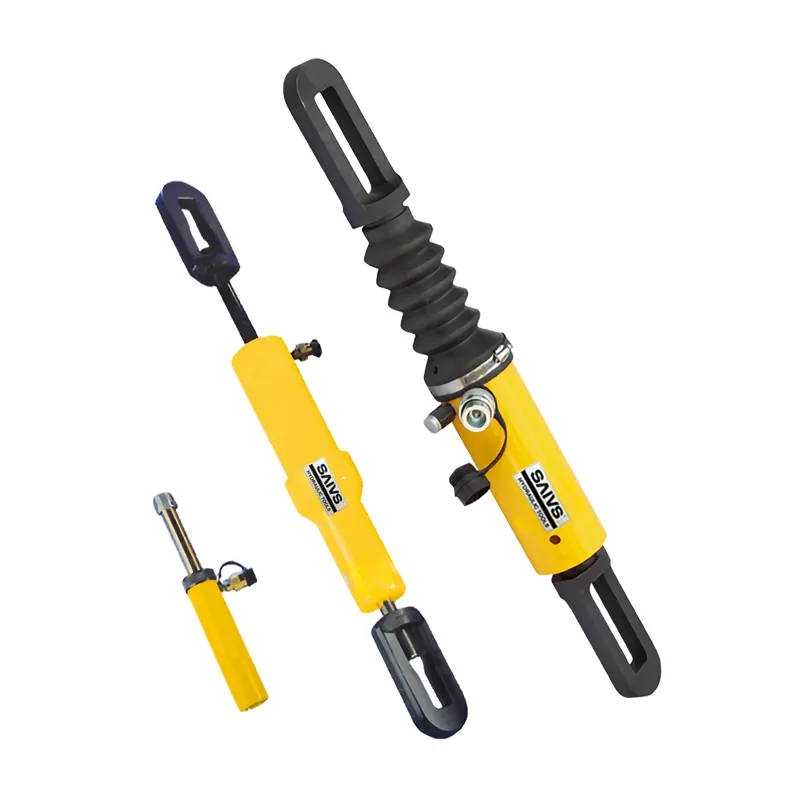Overview of Pull Hydraulic Cylinder
Hydraulic cylinders, also known as hydraulic actuators, are mechanical actuators that are used to give a linear force through a linear stroke. The term "pull hydraulic cylinder" specifically refers to Hydraulic Cylinders designed to pull rather than push, although many hydraulic cylinders can be used for both pulling and pushing.
Components of a Pull Hydraulic Cylinder
Cylinder Barrel: The main body of the cylinder, where the piston moves back and forth.
Piston: A solid cylinder or disk that moves within the cylinder barrel.
Piston Rod: Attached to the piston, it extends out of the cylinder to deliver the linear motion.
End Cap: Seals one end of the cylinder and houses the rod bearing and seal.
Rod End: The external end of the piston rod, which is often attached to the component being moved.
Hydraulic Fluid: Oil or another fluid that is pressurized to create the linear motion of the piston.
Operation of Pull Hydraulic Cylinders
Pull hydraulic cylinders operate on the principle of Pascal's Law, which states that pressure applied to a confined fluid is transmitted undiminished in all directions. When hydraulic fluid is pumped into one side of the cylinder, it creates pressure that moves the piston. In a pull hydraulic cylinder, the hydraulic fluid is introduced on the side of the piston opposite to the rod side. This causes the piston to move towards the rod end, pulling the load attached to the rod.
Types of Pull Hydraulic Cylinders
Single-Acting Cylinders: These have hydraulic fluid supplied to one side of the piston only. The piston is moved in one direction by the Hydraulic Pressure and returned by an external force, usually a spring or the weight of the load.
Double-Acting Cylinders: Hydraulic fluid is supplied alternately to both sides of the piston. These can exert force in both extending and retracting directions, making them versatile for both pushing and pulling actions.
Applications of Pull Hydraulic Cylinders
Construction Machinery: Such as excavators and cranes where pulling action is required.
Agricultural Equipment: For operations like plowing where force is needed to pull equipment.
Industrial Automation: In assembly lines for pulling components into place.
Marine Applications: For operations like anchor handling where the cylinder needs to pull heavy loads.
Automotive Industry: In jacks and lifting systems where precise pulling action is needed.
Advantages of Pull Hydraulic Cylinders
High Force Output: Can generate significant force with relatively small hydraulic pressure.
Controlled Movement: Provides precise control over the movement and positioning of loads.
durability: Designed to withstand high pressure and heavy loads.
Versatility: Can be used in various configurations and applications.
Efficiency: Hydraulic Systems are efficient in transmitting power, making them ideal for heavy-duty applications.
Maintenance and Safety
Regular Inspections: Check for leaks, wear, and damage to the cylinder, piston rod, seals, and connections.
Proper Lubrication: Ensure that the moving parts are properly lubricated to minimize wear.
Use of Quality Hydraulic Fluid: Ensure the hydraulic fluid is clean and of the correct specification.
Safety Precautions: Follow proper safety protocols to avoid accidents, as hydraulic systems operate under high pressure.
Understanding these basics can help in selecting, using, and maintaining pull hydraulic cylinders for various applications.
Why Choose SAIVS™ as Your Supplier?
With 20 years of industry experience, SAIVS is a leading Chinese manufacturer of high-quality tools, offering competitive pricing and excellent customer service.We pride ourselves on exceptional quality control, extensive experience, and comprehensive after-sales service.
